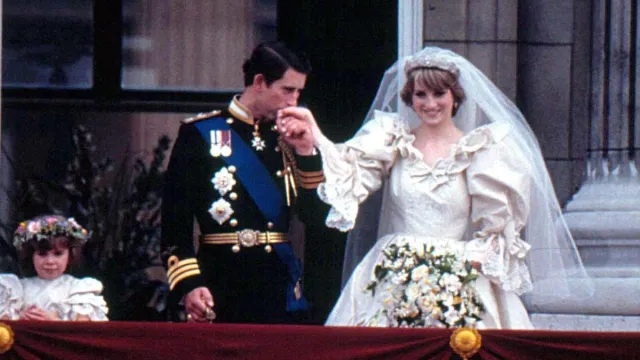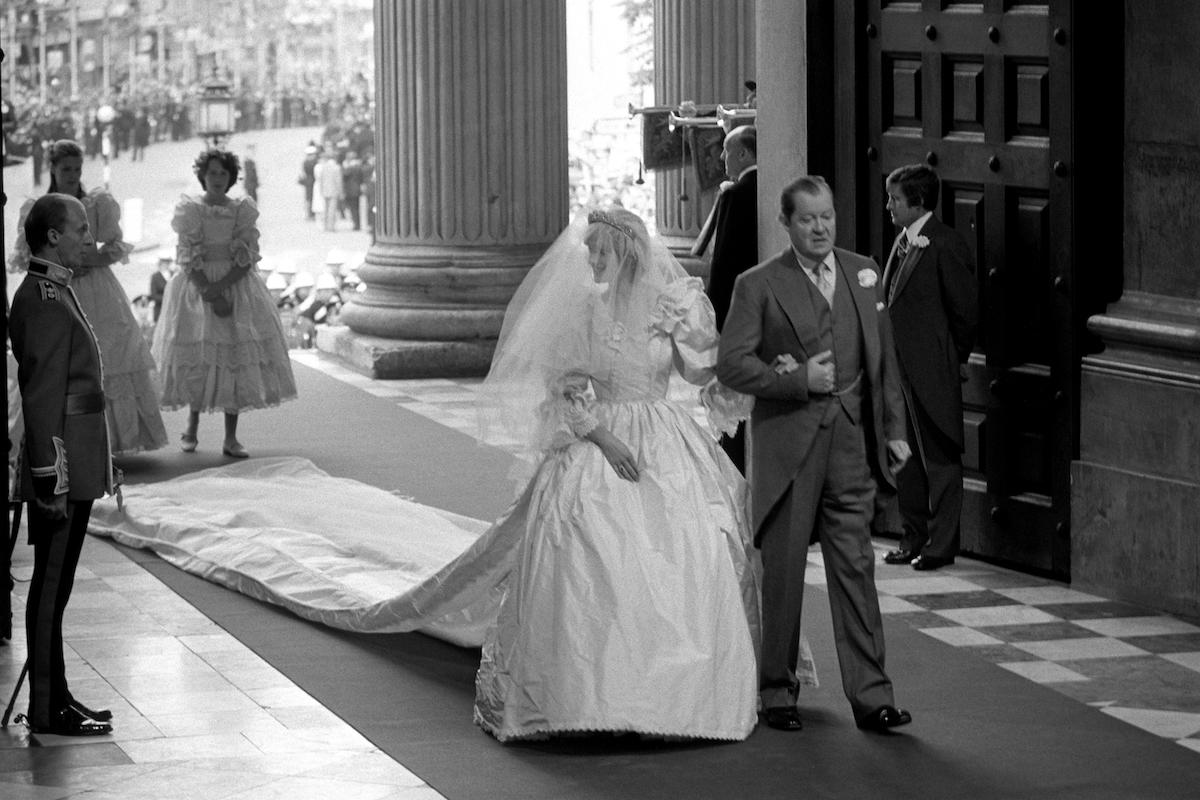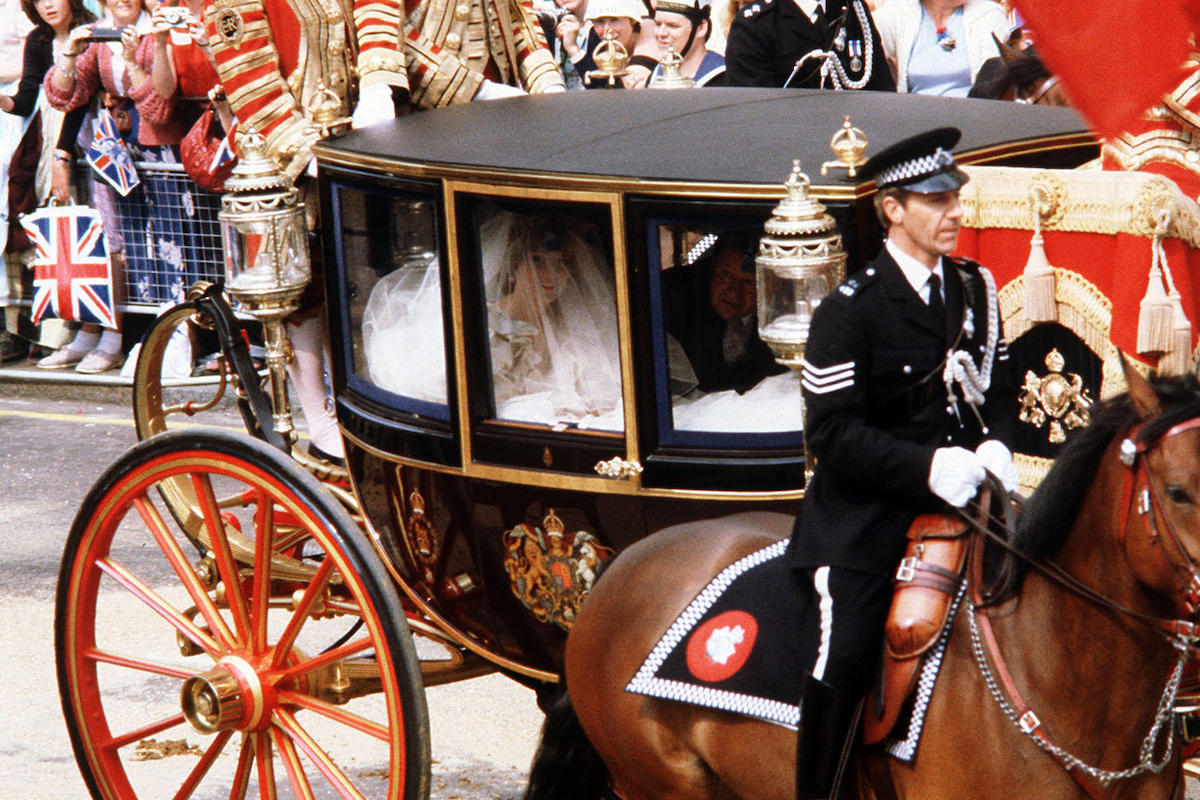The Real Story Behind the Drama of Princess Diana’s Iconic Wedding Dress

To the 750 million people around the world watching “The Wedding of the Century,” 20-year-old Lady Diana Spencer looked like she stepped out of the pages of a fairy tale when she married Prince Charles on July 29, 1981. The former nursery school teacher and part-time nanny had wanted her wedding dress to capture the romantic spirit of the day. Even more important, it had to be dramatic enough to fill the cavernous space of St. Paul’s Cathedral. And while viewers never would’ve been able to tell, the soon-to-be princess and designers Elizabeth and David Emmanuel were the only ones who knew the drama that came with the stunning gown.
It all began the minute Diana chose the little-known designers for the coveted assignment of creating her wedding dress. It was first thought Bill Pashley (who designed both of her sisters’ wedding dresses) would be tapped for the job. But, despite the mixed reviews Diana had received for wearing a revealing black taffeta evening dress by the Emmanuels for her first formal evening engagement with Charles, she could not be persuaded to look elsewhere.
When I interviewed Elizabeth for my book, Diana: The Secrets of Her Style, she revealed Diana actually wanted to wear a dress that already existed that she’d seen on a model at the designers’ London studio. Reluctantly, she let Diana try on the dress. “She told me, ‘I want that dress,’ but I felt she needed something created especially for her,” Emmanuel told me. “She tried on the dress to get a feel for how it would look. It had the big frills and the tiny waist that she liked. We decided to model her dress on that dress.”
Elizabeth said Diana wanted something “extravagant” and together, they decided the dress would have a 25-foot train—the longest ever at the time worn by a royal bride. The design was fashioned from 44 yards of ivory paper taffeta and 10,000 mother of pearl seed pearls that were hand-embroidered by Elizabeth and her mother. The unabashedly ornate design was a frothy meringue of frills, ruffles, and bows.

But besides coping with the anxiety of creating a dress that would become part of royal history, the Emmanuels had to contend with a far more serious issue: Diana’s rapidly shrinking frame. Charles had made an off-handed comment to his fiancée on the day their engagement was announced about her weight. When he put his arm around her waist for the official photographs, he said his wife-to-be was “a bit chubby,” which set off Diana’s extreme and chronic bouts of bulimia. As a result, she lost 20 pounds in the five months leading up to the wedding.
At the start of the wedding dress fittings, Diana had been a British size 14 (a U.S. size 10) with a 29-inch waist; on her wedding day, she had a 23-inch waist and had dwindled down to a size 10 (a U.S. size 6).
The Emmanuels did not want to cut the yards of fabric for the dress until Diana’s weight had stabilized. Elizabeth told me it was left to her and her husband to help the nervous bride cope with the mounting pressure because, except for her very first fitting when Diana was accompanied by her mother, Frances Shand-Kydd, she was always alone.
“She lost loads and loads of weight and her body went through some pretty drastic changes,” Emmanuel said. “It was a problem, but at the time, we thought she looked more and more beautiful.”

When Diana alighted Cinderella-like from her glass carriage at the steps of St. Paul’s on that fateful morning, she looked “like a butterfly emerging from a chrysalis,” Elizabeth recalled. The dress fulfilled Diana’s dream of looking like a princess, despite the fashion critiques leveled at her and the designers at the time. (Diana loved the gown so much, she chose an image from the wedding for her Christmas card that year.)
The 18th-century coach that took her and her father, John, Earl Spencer, to the church was far too small for the billowing dress to be squeezed next to her tall and stout father. The gown had gotten badly wrinkled during the journey from Buckingham Palace to St. Paul’s. The Emmanuels, with the help of Diana’s bridesmaids, did their best to unfurl the dress and train before Diana’s walk down the 652-foot red carpet to the altar.
“When I look back on that day, there were some things that could have been different—her hair wasn’t quite right and the dress had some creases,” said Elizabeth. “Whatever criticisms were handed out fall away. On that day, she was beautiful.”
RELATED: For more up-to-date information, sign up for our daily newsletter.
A year after her death in 1997, I visited the Spencer family estate, Althorp, where Diana’s brother, Charles Spencer, had just opened an exhibition of his late sister’s dresses. (It ran from 1998 until 2014.) Eager to see Diana’s iconic wedding dress, I quickly spotted it in a long glass case set off by itself. Fitted on a faceless mannequin with the newly minted princess’ veil and the Spencer family tiara, it seemed to glow in the darkened room.
But upon taking a closer look, I noticed the dress, with its voluminous wrinkled skirt, had slightly yellowed with age. In fact, without Diana, there was nothing magical or princess-like about it. Instead, it was simply a relic of a day long ago when a naive young woman believed she was marrying her Prince Charming. And for more on the intimate details of Diana’s life, check out 23 Facts About Princess Diana Only Her Closest Friends Knew.
Diane Clehane is a New York-based journalist and author of Imagining Diana and Diana: The Secrets of Her Style.